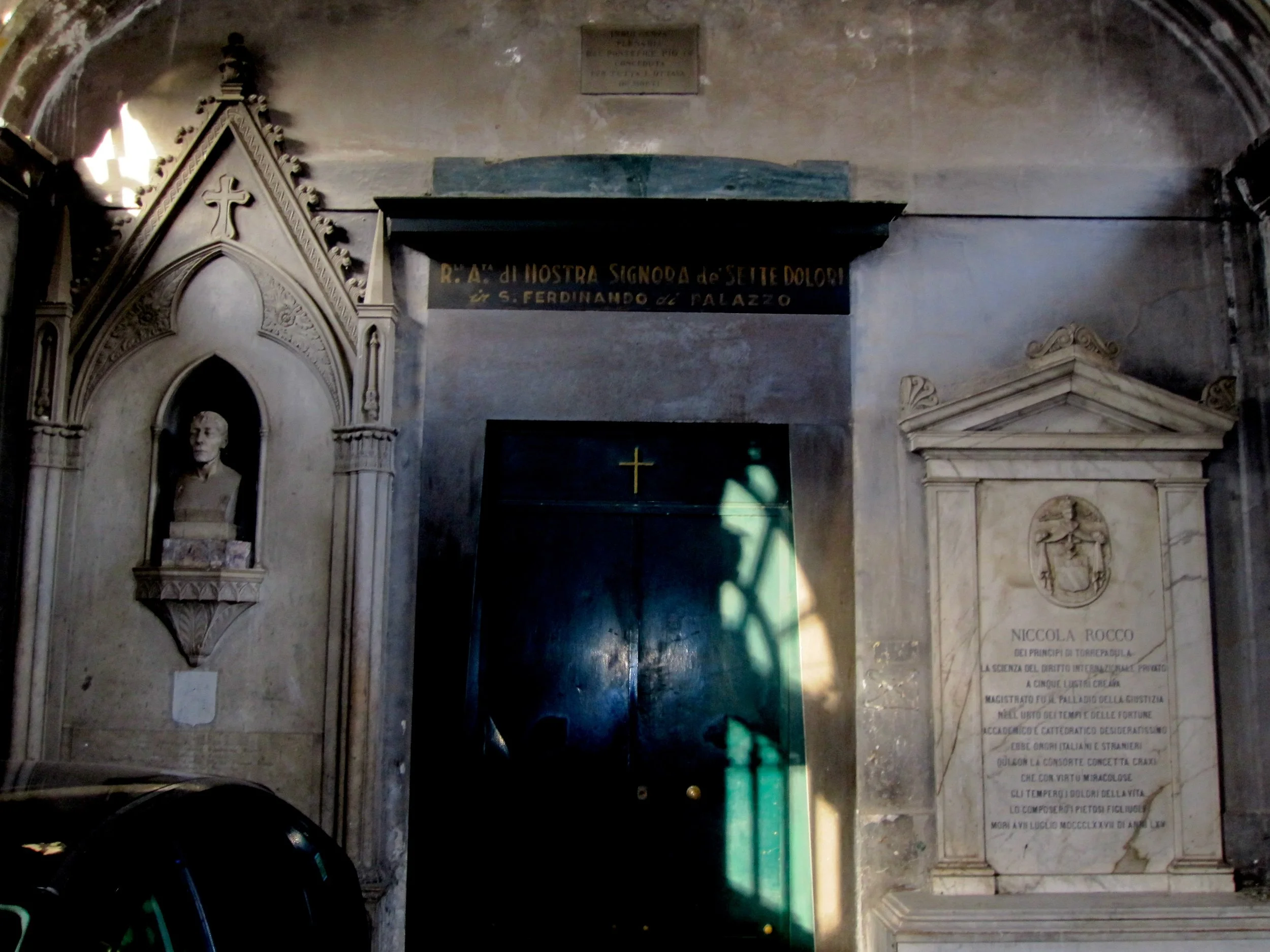I have a dozen Amos Pettingill narcissus bulbs to plant. It doesn’t seem like such a large project and it should have been done last year, but I can’t decide where to put them. My husband and I have different ideas about gardening. He is from Rome. His loves stone and statuary. He thinks the bulbs should go into terracotta pots.
I, on the other hand, am smitten with the idea of the English countryside. Once I had a lovely stand of giant King Alfred daffodils. One autumn, a friend of my husband’s who was working on our property bricked over the place where they lay buried. I picture the bulbs trying to push their way upward and hitting the unforgiving undersurface of the pavers. It was as though their patch of garden had become a tomb. I wonder how many springs they might have tried to pierce through the hard, baked clay before they finally gave up.
My husband's elderly aunt lived in the Chaia district of Naples in the apartment that had been her mother’s. After Marcella died, we found an intriguing envelope on her desk. On the outside of the envelope she had written Nostra Signora de’ Sette Dolori (Our Lady of the Seven Miseries). Inside was a heavy, old fashioned skeleton key. Although some of my husband’s more illustrious early ancestors are buried in the 16th century family chapel in the medieval church of San Lorenzo Maggiore, we suspected that the envelope and key were clues to the more modern family burial place. Our search began in the Poggioreale section of the city at the Cimitero di Santa Maria del Pianto (The Cemetery of Saint Mary Weeping).
In the spring of 1656, the bubonic plague began to ravage the population of Naples. In the ensuing months, a thousand people a day perished.. By the end of the summer, nearly 200,00 Neapolitans had died, almost half the city’s inhabitants. The dead were dispatched to a grotto at Poggioreale far to the east of the city centre. The site was first used as a burial grounds by the Greeks in the fourth and fifth centuries AD. In 1657, the church of Santa Maria del Pianto was constructed in remembrance of those who were buried en masse nearby. During the Napoleonic occupation of the early nineteenth century, the buildings and monuments of the present day cemetery began to sprout up around the church.
This cemetery is no English country graveyard. It is a veritable city in itself, built almost entirely of granite and marble and wrought iron. It is as though all the colour has been drained from its surfaces. Here the dead reside in a little metropolis of grey and white sarcophagi, neoclassical mausoleums and sculptures of grieving saints and angels. The monochromatic scheme is broken only by Roman pines and sago palms, the occasional dark emerald ivy clutching a masonry wall or a tiny dandelion pushing its way through the cracks between the cobblestones.
On our first visit to Poggioreale we scaled the steps that led up to the cemetery’s entrance and located an attendant, who brought us to an office filled with shelves and shelves of large leather volumes. We explained that we were looking for Nostra Signora de’ Sette Dolori. Slowly the man leafed through the pages of one book, then another, then another. Finally, he found the information he was looking for and asked us to follow him through the twisting maze of stone streets that winds through the cemetery. He led us to a two-storey pillared palazzo in the older part of the cemetery and escorted us inside to a cool, shadowy corner. There, etched into the slab at the front of one of the crypts which filled the walls from ceiling to floor was my husband’s surname.
I imagined the ashes of the last few generations my husband’s family all sifted together in that marble drawer in one final, forced semblance of domesticity. What did all these individuals carry with them into that tomb? Not the effervescence of their laughter and pranks, nor their dreams and plans and aspirations. Not the way the sun felt on their forearms as they sauntered down the Lungomare on a summer’s afternoon or the way the light hurt their eyes as they squinted into the glistening waters of the bay. Not the memories of rituals and celebrations or the sweet notes of a piano melody escaping from the drawing room and meandering its way down the corridor. Not a single possession other than the clothes in which they were interred.
I imagined the higher energies of love and hope and courage soaring upward with their spirits, leaving only the dark heaviness of fear, grief, anger, regret and everything that could not be forgiven in this life to accompany them to this sepulchre. Then I turned to my husband and whispered, “Do not put me in that box.”
So now All Hallows’ Eve and and All Saints’ Day and All Souls’ Day have past and the first rains have softened the ground and it is time to plant my bulbs. I will bury them as close as I can to where the King Alfred Daffodils once stood. I want that spot to come alive for me again in the spring.
I dig twelve holes several inches deep. I worry that I have waited too long, that the bulbs no longer contain any life. I press them gently into their little nests and cover them with handfuls of damp soil. I hope they will be like the dandelions at the Cimitero. Why does the promise of their blossoms in the new year seem not quite enough in this moment?
My soul longs to lift from this earth, but so, too, do my bones.

